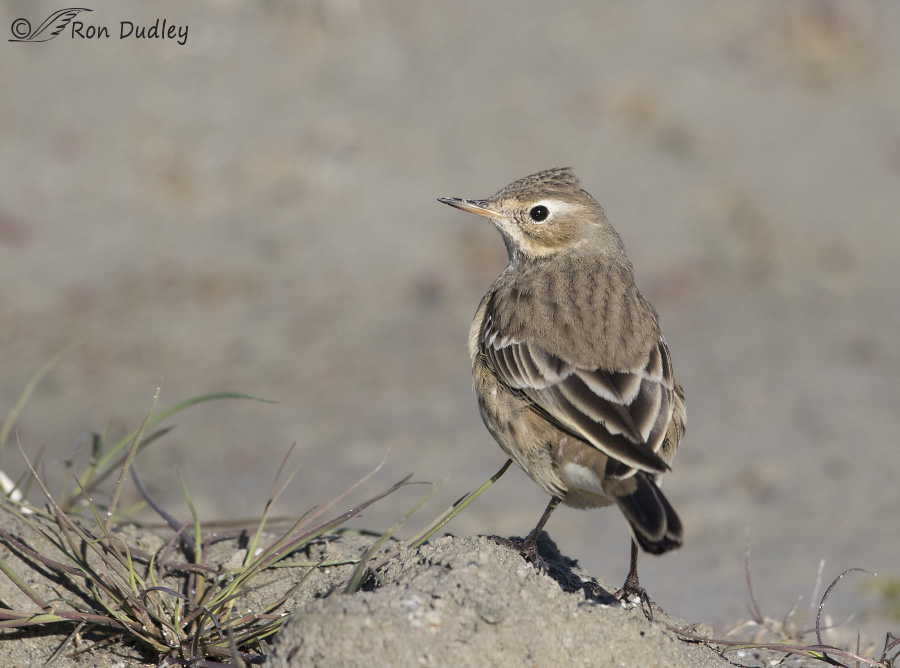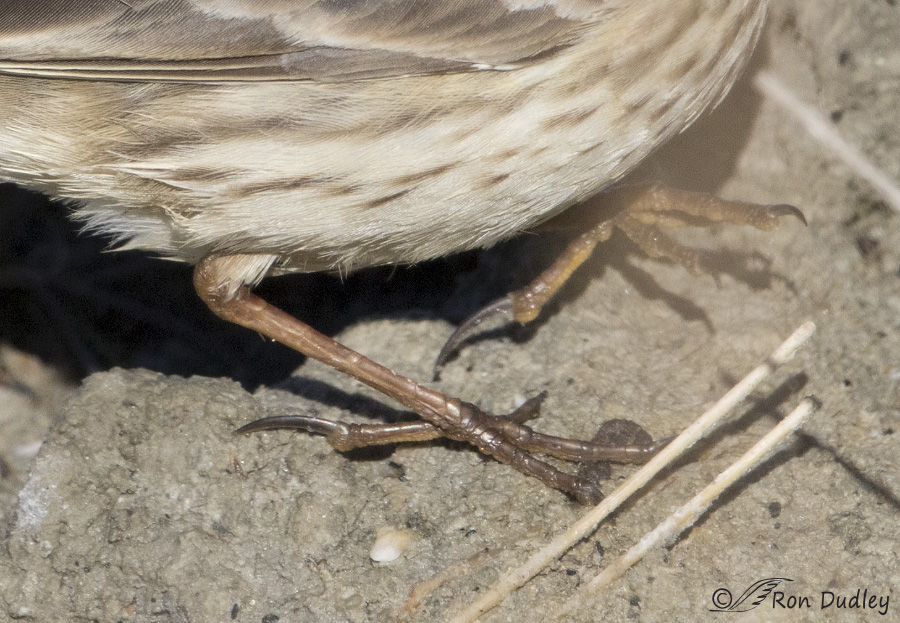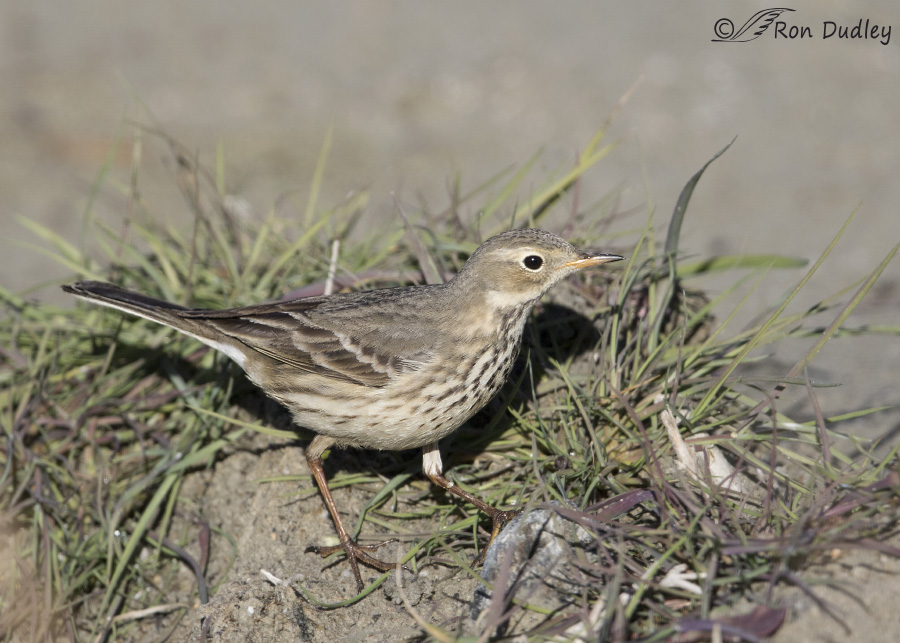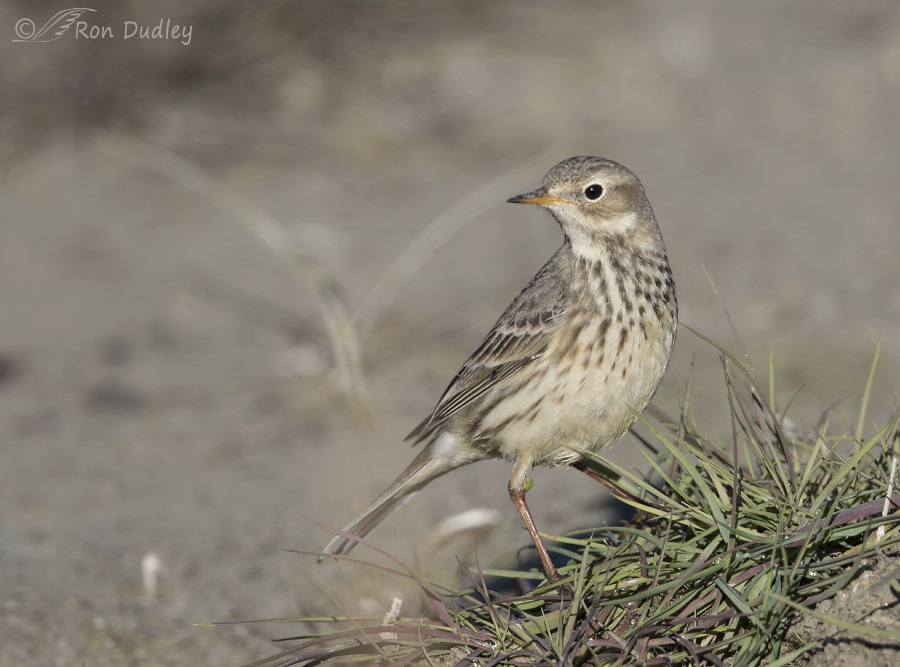I’ve seen far more American Pipits migrating through northern Utah this fall than I’ve ever seen before. I hope that’s a sign they had a highly successful breeding season up north this past summer.

1/3200, f/6.3, ISO 500, Canon 7D Mark II, Canon EF 500mm f/4L IS II USM + 1.4 tc, not baited, set up or called in
I photographed two pipits yesterday morning and this is one of them – both of them were feeding near the 4-way at Farmington MBR. The wind ruffled the cap of this bird for a moment which gave me a bit of a different look. I wish I had more depth of field for the tail but I like the look-back from the bird and the clean background.

American Pipits are one of the few ground-dwelling songbirds that breed in alpine meadows including on the arctic tundra so their habitat is generally inhospitable and frequently has snow. Pipits have an unusually long hallux (back toe and claw) which is thought to aid them in walking on snow as they forage. This extremely large crop of a (mediocre) image taken yesterday shows that long hallux pretty well.

1/3200, f/6.3, ISO 500, Canon 7D Mark II, Canon EF 500mm f/4L IS II USM + 1.4 tc, not baited, set up or called in
This is a different bird from the first image. Both pipits were foraging in the grasses and mud and attempting to avoid being blown over by the stiff, cold north wind.

1/2500, f/6.3, ISO 500, Canon 7D Mark II, Canon EF 500mm f/4L IS II USM + 1.4 tc, not baited, set up or called in
I liked the noble pose this pipit gave me.
This time of year I tend to concentrate on raptors and yesterday I did spend some time with a Prairie Falcon, a couple of Northern Harriers and even a far-away adult Bald Eagle at Farmington. But I never like to ignore the LBJ’s (“little brown jobs”, thank you for that moniker, Elephant’s Child) when I encounter them.
I’ll miss these birds (and their soft calls) when they’re gone and that won’t be long now.
Ron


Great shots!
Charlotte
As you know I have a weakness for the LBJs. I am wondering though, just what a raptor would do with a hallux as proportionately long as the pipit’s… Not just walking on snow anyway.
Many raptors have a long hallux too, EC. It’s more curved than this and they use it to pierce and kill their prey. Falcons often use it in the strike.
I appreciate your inclusion of links to calls and songs……I scanned several sites hoping to learn what the purpose of a “tails-up” call was, but couldn’t find a definition–what does it mean ?
“I scanned several sites hoping to learn what the purpose of a “tails-up” call was, but couldn’t find a definition–what does it mean?”
Kris, here’s what BNA Online has to say on the subject:
“In the Tail-up Display of A. r. alticola, a male stands upright on an elevated perch, such as a tussock, with his wings drooped and his bill and tail held well above the horizontal (Verbeek 1970, Miller 1988). The tail does not bob. A male often assumes this posture following a territorial chase, and also when another pipit flies over his territory. In the latter case the display is accompanied by the Tail-up Call.”
This bird may be an LBJ, but from these photos, it seems to have a big personality. That long hallux is pretty amazing. Looks like it could definitely be a big help with balance. Thanks for introducing me to yet another bird I’m not sure I’ll ever see (or recognize if I do happen to see it).
From the range maps it looks like they winter in your area, Susan. I hope you get to see one or more sometime.
Ron, just checked the official Hueco Tanks bird list and it describes the American Pipit as rare, seen about once in every 10 trips in proper season. It has been seen in spring, fall & winter. So I’ll keep my eyes open and hope they can see at the proper speed to recognize it… I’m sure it doesn’t hurt that we are on the Rocky Mountain flyway.
A nice series…these LBJ’s are very graceful, gentle, even sweet-looking. I especially like the last two images. The eye ring is so well defined in both and the last is especially graceful-looking. I wondered if those long toes and nails helped them hold onto grasses, etc. and helps keep them from being tumbled by the wind. Most Birds are so light this must be a problem for many of them…small things face so many challenges just to survive….a tough , short life….
Patty, those long toes (especially the hallux) may help with stability on other perches too but from what I read they’re suspected to function mostly on snow. And you’re right, small birds especially are blown about by wind. I usually don’t go shooting on windy days because they’re hunkered down to avoid the wind. On the other hand, larger birds can be a lot of fun (and sometimes easier) to photograph when they’re “wind-surfing”.
Very nice series Ron! A tough bird to find here in Vermont, but we occasionally get them in the fall.
Thanks for sharing.
Thank you, Dick. In the right habitat they’re pretty common around here, especially this time of year.
The are cute, Ron, and posed nicely for you. My first impression was the one needed a toenail trim! In the last picture is that a bug or something else on the bird’s leg?
In the last picture is that a bug or something else on the bird’s leg?
Judy, if you’re talking about the “green thing” on the upper right leg, no it’s not a bug. When I blew the image up it appeared to be a bit of duck weed.
That was it!